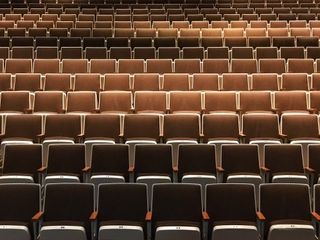Louis Deslauriers always encourages fellow professors to attend lectures in subjects outside their area of expertise.
“I tell them, ‘Don't be shy to just drop into a course in another field,’” says the director of Science Teaching and Learning in the Faculty of Arts and Sciences at Harvard University. “I don't know that much about biochemistry, so sometimes I would sit in on the biochemistry lecture.”
But Deslauriers, also a senior preceptor in physics, did not find those classes as intellectually rewarding as he would have liked.
“I would listen to the person talk for an hour and I just could not believe how little I was learning,” Deslauriers says.
That’s because Deslauriers was listening to a traditional lecture, and he -- like most humans -- does not learn well from passive lectures.
“Most authors agree that traditional passive learning structures are neither the most appropriate, nor the most productive way, to teach,” wrote sociology researchers John Hamlin and Susan Janssen way back in 1987.
Decades of research since, including Deslauriers recent work, show a clear and consistent benefit for teaching with active learning rather than traditional lecture. Even though active learning techniques have been embraced by many educators and schools, traditional lecture remains the default teaching style in much of higher ed.
Active Learning: Educator Resistance
In many instances, reliance on lectures persists because of inertia and because it’s the way most current educators learned themselves. “‘It worked for me, and it worked for the other people who are my colleagues today. So if it's done well, I guess it works,’” Deslauriers says. “That’s [seemingly] not an unreasonable thing to say. But it turns out, it's completely unreasonable. Because the people who end up teaching, they're probably the type of students that ended up learning the topic despite the way they were taught.”
Even these exceptional, and very atypical students, would likely have learned more had their class employed active learning.
“When people say, ‘This worked for me, when I was younger, I remember learning physics, or chemistry, or biology by listening to an instructor,’ I'd say, ‘Okay, that's true, you obviously learned a topic, but I bet that the density of how much you've learned per unit of time was actually much lower than it would have been otherwise.’”
Deslauriers adds, “If you were a student who ended up being the best in the class, I bet that if you would have had an expert tutor -- which is what we're trying to approximate with our active learning techniques -- to teach you one on one, I bet you would have learned at least twice, three, five times more.”
Some simple strategies to quickly incorporate active learning in your class can be found in Active Learning: 5 Tips for Implementing the Approach.
Active Learning: Student Resistance
It’s not just professors who are reluctant to embrace active learning; students often prefer passive learning even when it doesn’t work as well.
Deslauriers was the lead author of a 2019 study that assigned introductory physics students randomly to two versions of the same class. One group was taught with evidence-based active learning strategies while the other group was taught passively via traditional lectures given by highly rated instructors. As expected, students in the active learning group learned more but their perception of learning was lower than their peers in the lecture group.
“We're all susceptible to this cognitive bias,” Deslauriers says. “For example, if someone gives you directions to go from where you are to wherever, and that person gives you directions in a way that's highly, highly fluid, you might be lured into thinking that you completely understood the directions, when in fact, as soon as you get back in the car, you're like, ‘Wait a minute, I was seduced.’”
On the other hand, if the person pauses and hesitates and causes you to think about the route as you’re given directions, you might be more frustrated but you’ll also be learning more.
“If you had to think while the person was talking, and -- this is key here -- if it required cognitive effort on your part, this will sometimes be interpreted as, ‘Maybe I'm not learning as much.’ Because a cognitive effort doesn't typically feel really good,” Deslauriers says. “If something feels too good, like an explanation, then we will often mistakenly ascribe to that a lot of meat and, ‘Oh, I'm learning a lot.’ When in fact, you're not learning as much.”
To offset worry from students that they’re not learning in your class, Deslauriers advises making them aware of this cognitive bias from the get-go. “Once they are aware of it, then you try to show them evidence as often as possible that they are, in fact, learning,” he says. “Don’t wait until mid-semester to test the students to show them how much they've learned. Try to give them a mini-test early on, so that they can see, ‘Whoa, during lecture, there's active learning, and I'm struggling, there's a lot of effort on my part, but look, I can see the evidence that I'm learning.’”

